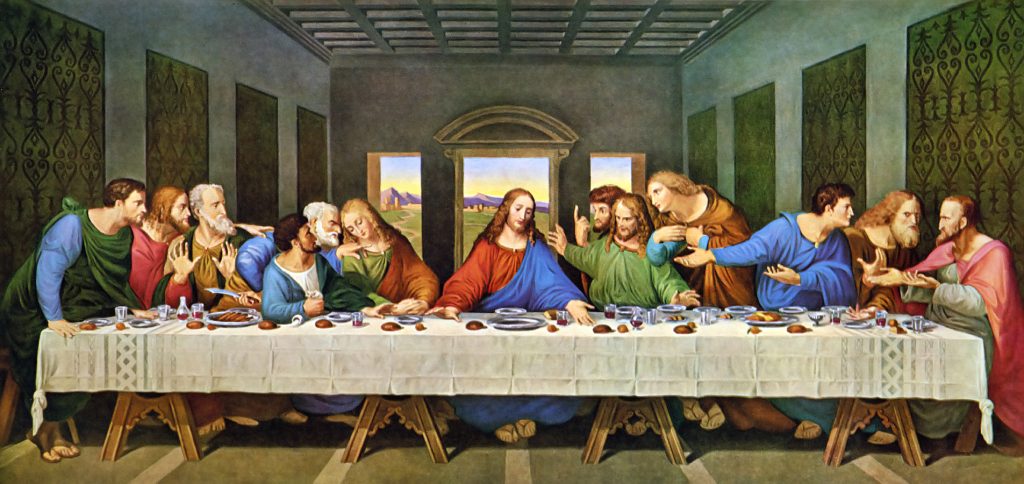
Conditions and characteristics of sacred art
Sacred art incorporates a series of characteristics that are necessary to recognize and deeply understand. For example, a painting may provoke a religious feeling, but it may not be appropriate to celebrate Holy Mass in front of it. If the elements that make up the artistic work, even if dominated by a religious feeling, are not spiritualized to a sufficient degree, too much attention is focused on a sensitive, purely aesthetic element, without elevating itself to a spiritual plane, which helps someone to place themselves before God. It should not, therefore, be treated as sacred art, but rather within the more general scope of religious art.

Sacred art, in short, not only must serve the Liturgy and respect specifically liturgical ends - whilst remaining faithful to its natural requirements as art -, but it must also express and promote these ends in its own way, directing it towards that purpose. the aesthetic pleasure that, by its nature, art itself is responsible for producing. Therefore, if the artist, in addition to being authentically so, is not vitally permeated with general religiosity and at the same time with liturgical religiosity, he will not be able to produce an authentic work of sacred art.
A series of consequences can be deduced from this. Sacred art must be understandable, that is, it must serve as a teaching, because it is a "theology in images". It must represent the truths of faith, not in an arbitrary way, but by expounding Christian dogma with the greatest possible fidelity and with authentically pious feelings.

- January 01, 2026
Human Creativity vs. Algorithmic Creativity

- January 01, 2026
2026 .. Hope for Gaza .. Happy New Year

- January 01, 2026
Happy New Year

- January 01, 2026
The Role of AI in the Preservation of Cultural Heritage and Art


- December 31, 2025
the 10 million-dollar sales of 2025

- December 31, 2025
Smart Museums: Artistic Experiences with AI

- December 31, 2025
Ethical Challenges of Machine-Created Art

- December 31, 2025
Henrique Lira - Brazil

- January 01, 2026
Human Creativity vs. Algorithmic Creati…

- January 01, 2026
The Role of AI in the Preservation of C…

- December 31, 2025
Smart Museums: Artistic Experiences wit…

- December 31, 2025
Ethical Challenges of Machine-Created A…

- December 30, 2025
Generative Art: From Code to Gallery

- December 30, 2025
How Artificial Intelligence Is Redefini…

- December 29, 2025
Artificial Intelligence and the Reconfi…

- December 29, 2025
The Artificial Intelligence Revolution …

- December 28, 2025
The Difference Between Contemporary Art…

- December 28, 2025
The Impact of Contemporary Art on Today…

- December 28, 2025
Contemporary Art and its Multiple Langu…

- December 27, 2025
Graffiti: Urban Voices That Tell Stories

- December 27, 2025
The Art of Graffiti: Expression, Identi…

- December 24, 2025
Art as Human Expression and Universal L…

- December 24, 2025
Art in the Street: When the City Become…

- December 23, 2025
Urban Art in Latin America

- December 23, 2025
Folk Art in Indigenous Communities of L…

- December 22, 2025
Graffiti as a Social and Political Lang…

- December 22, 2025
Graffiti – From the Street to Contempor…

- December 21, 2025
Contemporary Art and New Visual Narrati…

- August 29, 2023
The history of Bolivian art

- February 19, 2024
Analysis and meaning of Van Gogh's Star…

- January 28, 2024
Culture and Art in Argentina

- September 25, 2023
What is the importance of art in human …

- September 23, 2023
What is paint?

- August 23, 2023
The 11 types of art and their meanings

- August 10, 2023
14 questions and answers about the art …

- September 23, 2023
Painting characteristics

- August 30, 2023
First artistic manifestations

- January 12, 2024
10 most beautiful statues and sculpture…

- September 23, 2023
History of painting

- March 26, 2024
The importance of technology in art1

- July 13, 2024
The impact of artificial intelligence o…

- March 26, 2024
Cultural identity and its impact on art…

- April 07, 2024
Graffiti in Latin American culture

- April 06, 2024
History of visual arts in Ecuador

- August 16, 2023
The 15 greatest painters in art history

- April 02, 2024
History visual arts in Brazil

- October 18, 2023
History of sculpture

- November 21, 2024
The Role of Visual Arts in Society

- February 19, 2024
Analysis and meaning of Van Gogh's Star…

- August 13, 2023
9 Latino painters and their great contr…

- August 23, 2023
The 11 types of art and their meanings

- August 10, 2023
14 questions and answers about the art …

- August 27, 2023
15 main works of Van Gogh

- August 29, 2023
The history of Bolivian art

- January 28, 2024
Culture and Art in Argentina

- November 06, 2023
5 Latin American artists and their works

- September 23, 2023
Painting characteristics

- September 23, 2023
What is paint?

- September 25, 2023
What is the importance of art in human …

- March 26, 2024
Cultural identity and its impact on art…

- August 30, 2023
First artistic manifestations

- December 18, 2023
10 iconic works by Oscar Niemeyer, geni…

- January 20, 2024
What is the relationship between art an…

- January 12, 2024
10 most beautiful statues and sculpture…

- August 24, 2023
The most famous image of Ernesto "Che" …

- October 30, 2023
Characteristics of Contemporary Art

- May 26, 2024
Técnicas de artes visuais

- August 22, 2023


